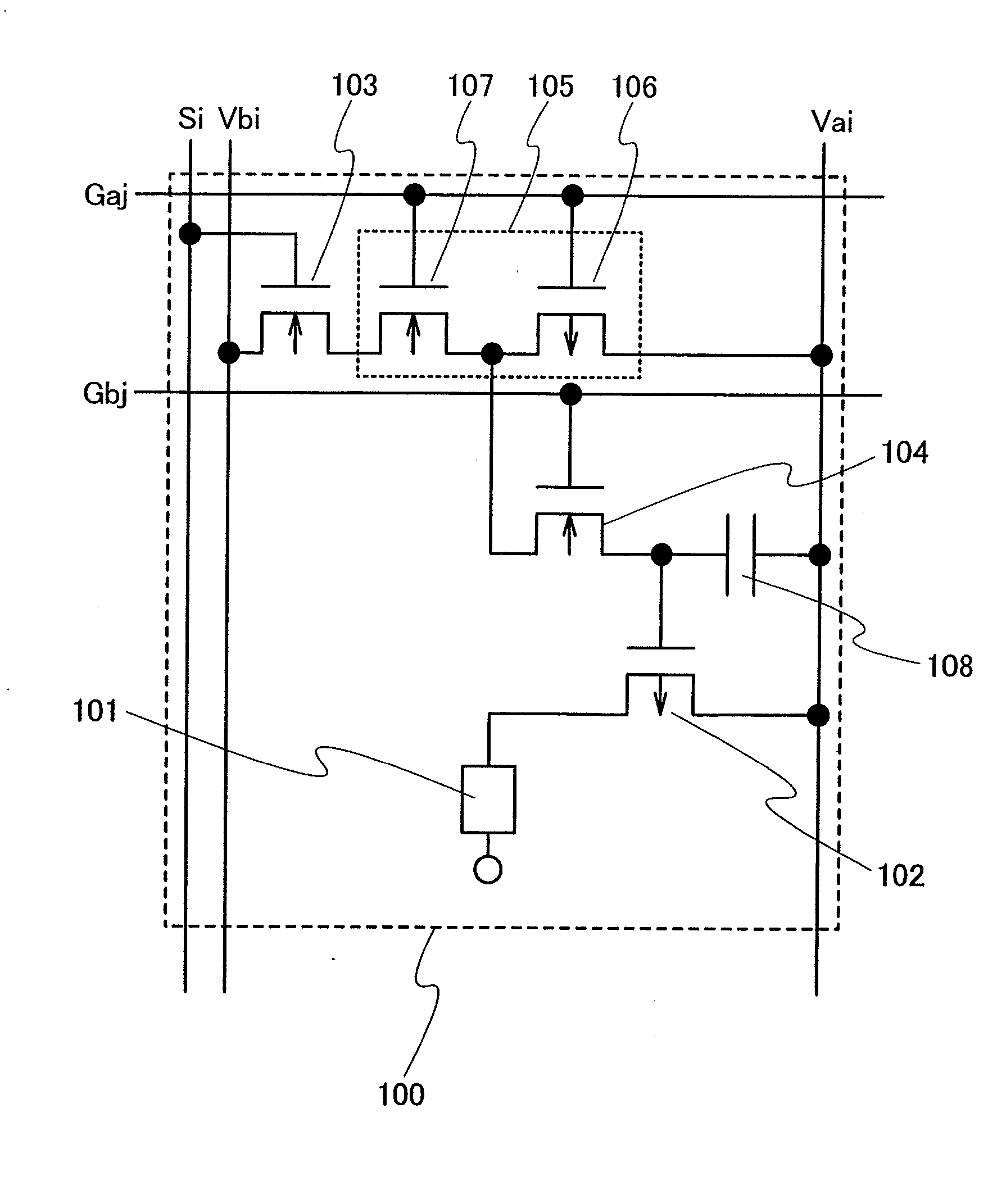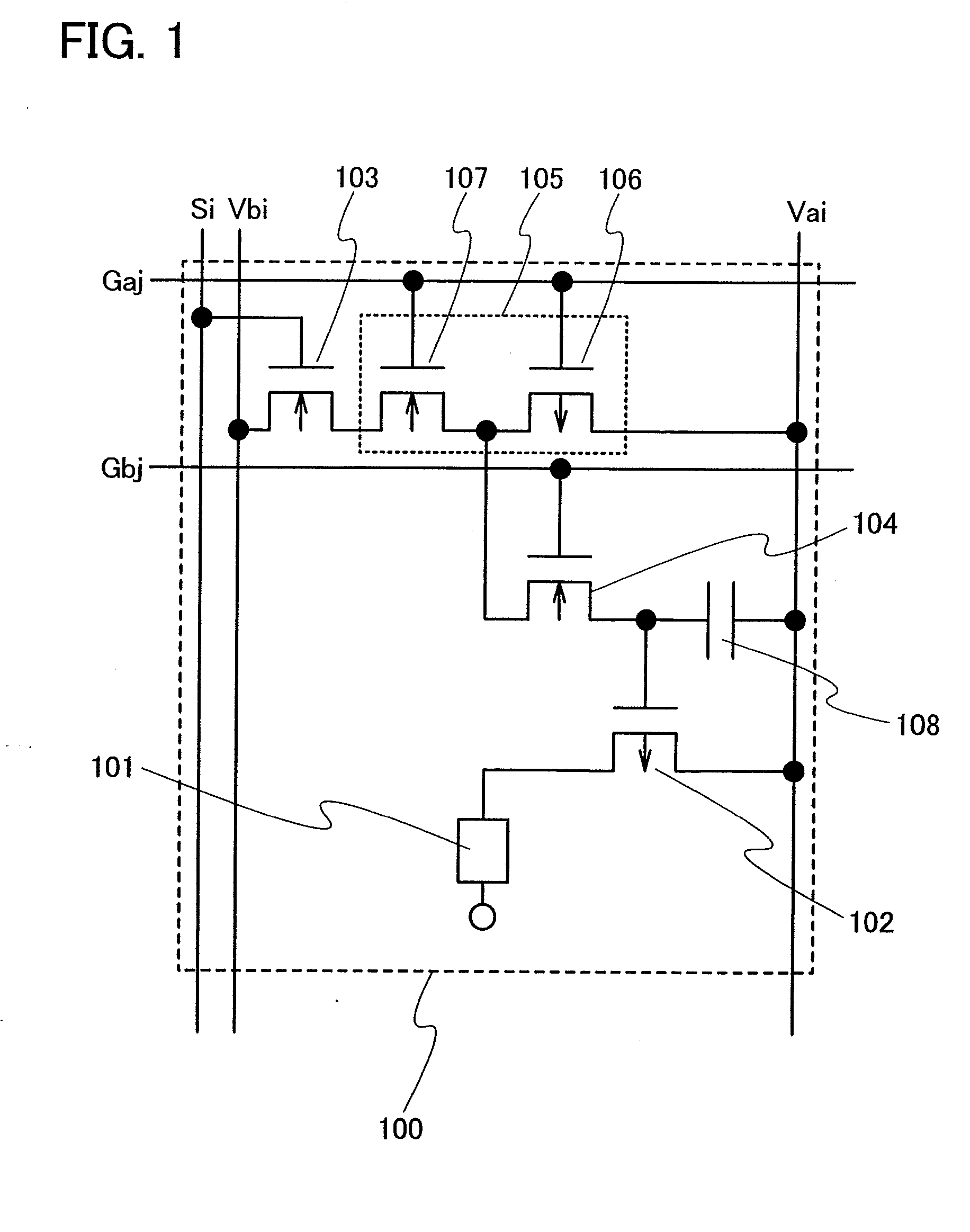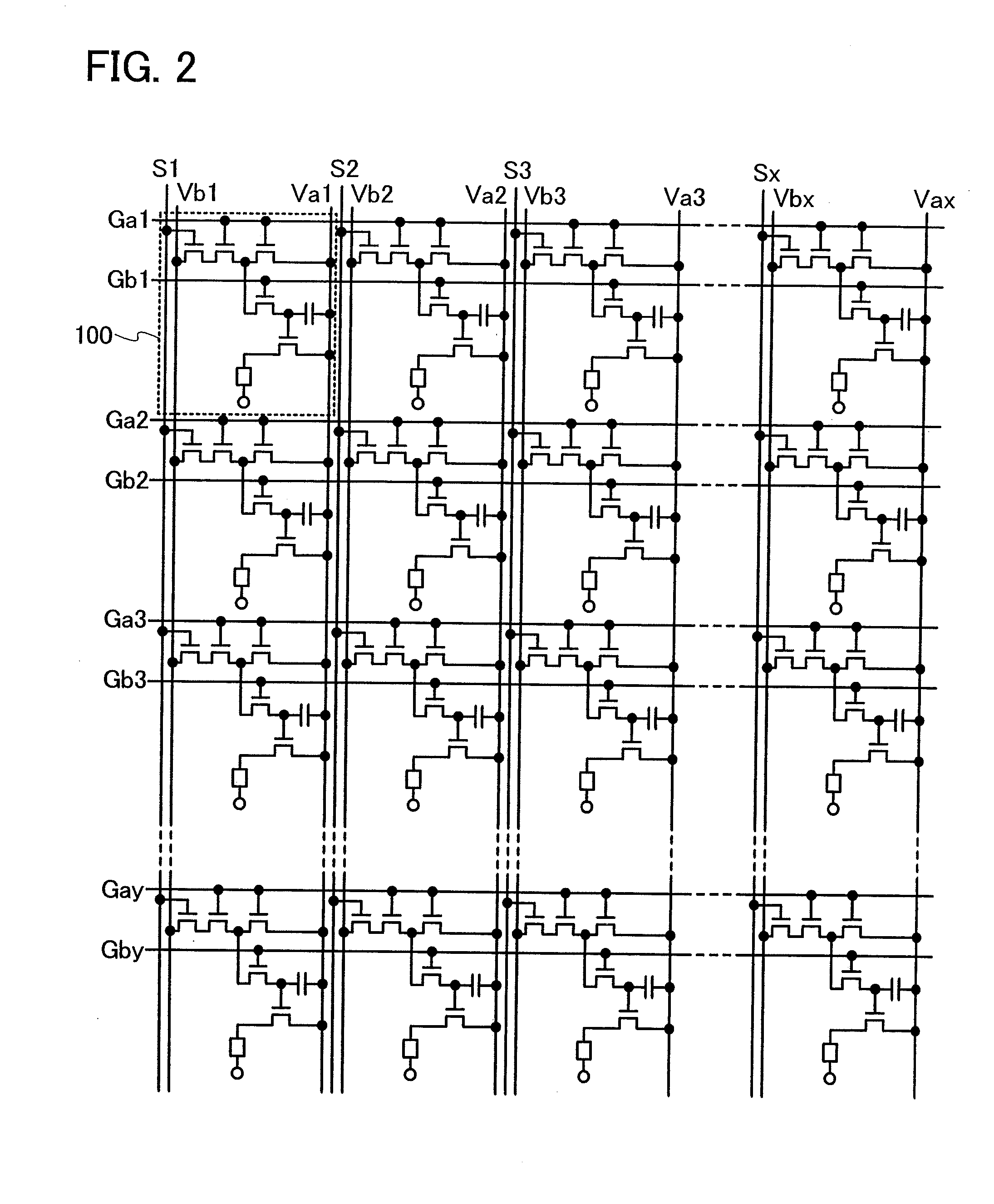Light-Emitting Device
a technology of light-emitting devices and scan lines, which is applied in the direction of instruments, static indicating devices, etc., can solve the problems of large consumption current, difficult to and excessive loading of output portions so as to reduce the potential of signal lines, prevent excessive loading, and ensure the reliability of scan line driver circuits
- Summary
- Abstract
- Description
- Claims
- Application Information
AI Technical Summary
Benefits of technology
Problems solved by technology
Method used
Image
Examples
embodiment mode 1
[0033]In this embodiment mode, the structure of a pixel included in a light-emitting device that is one mode illustrated in this specification is described. FIG. 1 shows a circuit diagram of a pixel included in the light-emitting device that is one mode illustrated in this specification as an example. A pixel 100 shown in FIG. 1 includes at least a light-emitting element 101, a first power supply line Vai (i is any one of 1 to x) having a first potential, a second power supply line Vbi (i is any one of 1 to x) having a second potential, a first transistor 102, a second transistor 103, a third transistor 104, and a switch 105.
[0034]The light-emitting element 101 includes a pixel electrode, a common electrode, and an electroluminescent layer to which current is supplied through the pixel electrode and the common electrode. A connection between the first power supply line Vai and the pixel electrode of the light-emitting element 101 is controlled by the first transistor 102. Note that ...
embodiment mode 2
[0072]Next, a method for manufacturing a light-emitting device that is one mode illustrated in this specification is described in detail. Note that although a thin film transistor (TFT) is shown as an example of a semiconductor element in this embodiment mode, a semiconductor element used for the light-emitting device that is one mode illustrated in this specification is not limited to this. For example, a memory element, a diode, a resistor, a capacitor, an inductor, or the like can be used instead of a TFT.
[0073]First, as shown in FIG. 9A, an insulating film 401 and a semiconductor film 402 are sequentially formed over a substrate 400 having heat resistance. It is possible to form the insulating film 401 and the semiconductor film 402 successively.
[0074]A glass substrate such as a barium borosilicate glass substrate or an aluminoborosilicate glass substrate, a quartz substrate, a ceramic substrate, or the like can be used as the substrate 400. Alternatively, a metal substrate such...
embodiment 1
[0158]In this embodiment, a method for manufacturing a light-emitting device that is one mode illustrated in this specification, by which a semiconductor element is formed by using a semiconductor film which is transferred from a semiconductor substrate (a bond substrate) to a support substrate (a base substrate), is described.
[0159]First, as shown in FIG. 16A, an insulating film 901 is formed over a bond substrate 900. The insulating film 901 is formed using an insulating material such as silicon oxide, silicon oxynitride, silicon nitride oxide, or silicon nitride. The insulating film 901 can be formed using either a single insulating film or by stacking a plurality of insulating films. For example, in this embodiment, the insulating film 901 is formed by stacking silicon oxynitride containing more oxygen than nitrogen and silicon nitride oxide containing more nitrogen than oxygen in that order from the bond substrate 900 side.
[0160]For example, in the case of using silicon oxide f...
PUM
 Login to View More
Login to View More Abstract
Description
Claims
Application Information
 Login to View More
Login to View More - R&D
- Intellectual Property
- Life Sciences
- Materials
- Tech Scout
- Unparalleled Data Quality
- Higher Quality Content
- 60% Fewer Hallucinations
Browse by: Latest US Patents, China's latest patents, Technical Efficacy Thesaurus, Application Domain, Technology Topic, Popular Technical Reports.
© 2025 PatSnap. All rights reserved.Legal|Privacy policy|Modern Slavery Act Transparency Statement|Sitemap|About US| Contact US: help@patsnap.com



